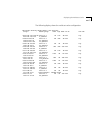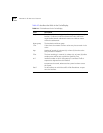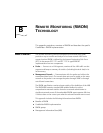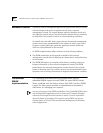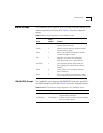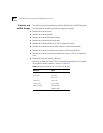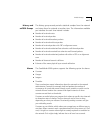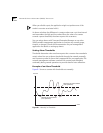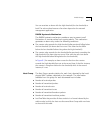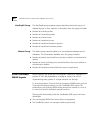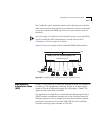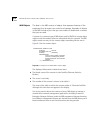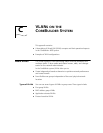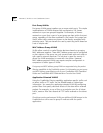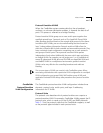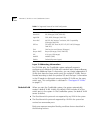
RMON Groups B-7
You can associate an alarm with the high threshold, the low threshold, or
both. The actions taken because of an alarm depend on the network
management application.
RMON Hysteresis Mechanism
The RMON hysteresis mechanism provides a way to prevent small
fluctuations in counter values from causing alarms. This mechanism
generates an alarm only under the following conditions:
■ The counter value exceeds the high threshold after previously falling below
the low threshold. (An alarm does not occur if the value has not fallen
below the low threshold before rising above the high threshold.)
■ The counter value exceeds the low threshold after previously exceeding the
high threshold. (An alarm does not occur if the value has not risen above
the high threshold before falling below the low threshold.)
In Figure B-1, for example, an alarm occurs the first time the counter
exceeds the high threshold, but not at the second time. At the first instance,
the counter is rising from below the low threshold, while in the second
instance, it is not.
Host Group
The Host Group records statistics for each host, denoted by the host’s
physical MAC address, detected on the network. The information
available from this group for each discovered host includes:
■ Number of received packets
■ Number of transmitted packets
■ Number of received octets
■ Number of transmitted octets
■ Number of transmitted broadcast packets
■ Number of transmitted multicast packets
■ hostTimeTable that provides all these statistics in a format indexed by the
relative order in which the host was discovered. Host Group adds new hosts
to the end of this table.



